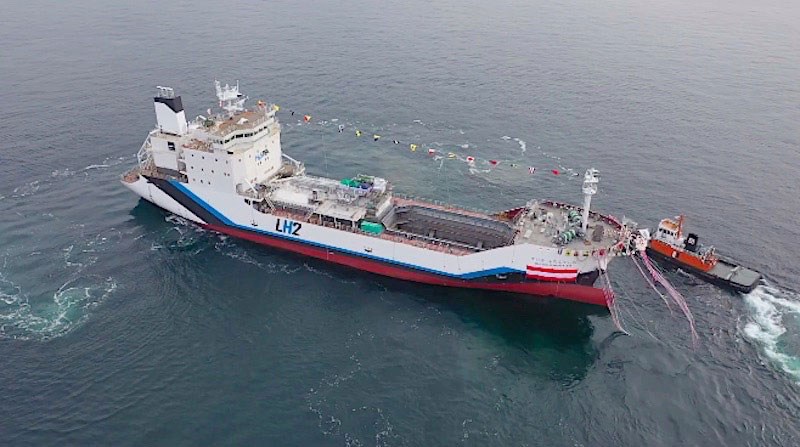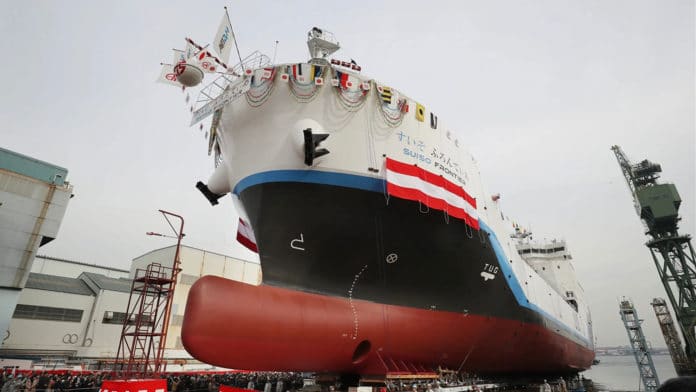While the rest of the world is focused on the electric car as a solution to reducing emissions in terms of mobility, some have opted for hydrogen-powered vehicles. However, the difficulties arising from transporting Hydrogen placed it as an energy alternative for long-term consideration.
Last Wednesday, a Japanese public multinational corporation Kawasaki Heavy Industries launched the first vessel in the world capable of transporting liquid Hydrogen – the raw material, which many have called the fuel of the future. Although it is not finished yet, it is expected to be ready by the end of 2020.
Called “Suiso Frontier” (according to the Japanese translation of the word “hydrogen”), the ship is inaugurated on Wednesday, in front of a crowd of 4,000 people at a port in Kobe, Japan. Hydrogen will be stored in a vacuum-insulated hydrogen container with a capacity of 1250 cubic meters at a temperature of -253° C. After condensation, it becomes possible to obtain liquid Hydrogen occupying a volume 800 times less than its gaseous volume.

The vessel, 116 meters long and weighing around 8,000 tonnes, is to mark Japan’s commitment to the hydrogen industry. It will transport liquid Hydrogen produced from inexpensive brown coal in Australia and ship to Japan.
If everything goes as planned, deliveries should begin in the first quarter of 2021. Japanese trading companies, including Marubeni and Electric Power Development, a domestic trading company, also known as J-Power, have partnered with Kawasaki for this project. In addition, this project also has the participation of a large Dutch energy company, Royal Dutch Shell.
The latter company comes to mind when you look at the propulsion system of the Suiso Frontier – it is based on a diesel engine.
Read more: Japan launches new, lithium-ion battery-powered ‘Toryu’ submarine
Hydrogen is considered to be the fuel of the future, among others, because it is “clean.” When it is burned, no CO2 is emitted. However, the problem today is the cost – both when it comes to the production of raw material and its transport.
Thanks to the ability to transport liquid hydrogen gas in large quantities, Kawasaki’s ship can be considered as a card to change the game on the market of clean energy in the coming years. According to estimates by market research firm Fuji Keizai, global demand for Hydrogen will increase more than 50 times to about $ 3.75 billion by 2030.
This high demand is due to the characteristic of not emitting CO2 when burning, so Hydrogen will be a promising fuel source for reducing carbon emissions.
But here, this Hydrogen is obtained from the combustion of coal, a process emitting between 9 and 12 tonnes of CO2 for each tonne of Hydrogen produced. However, the Suiso Frontier is part of a project called HySTRA, which is officially working on the development of a hydrogen sector that does not release CO2. So far, neither the Japanese government nor Kawasaki Heavy Industries has announced plans to capture or store this gas. This is equivalent to exporting Japanese carbon dioxide emissions to Australia in the end.
